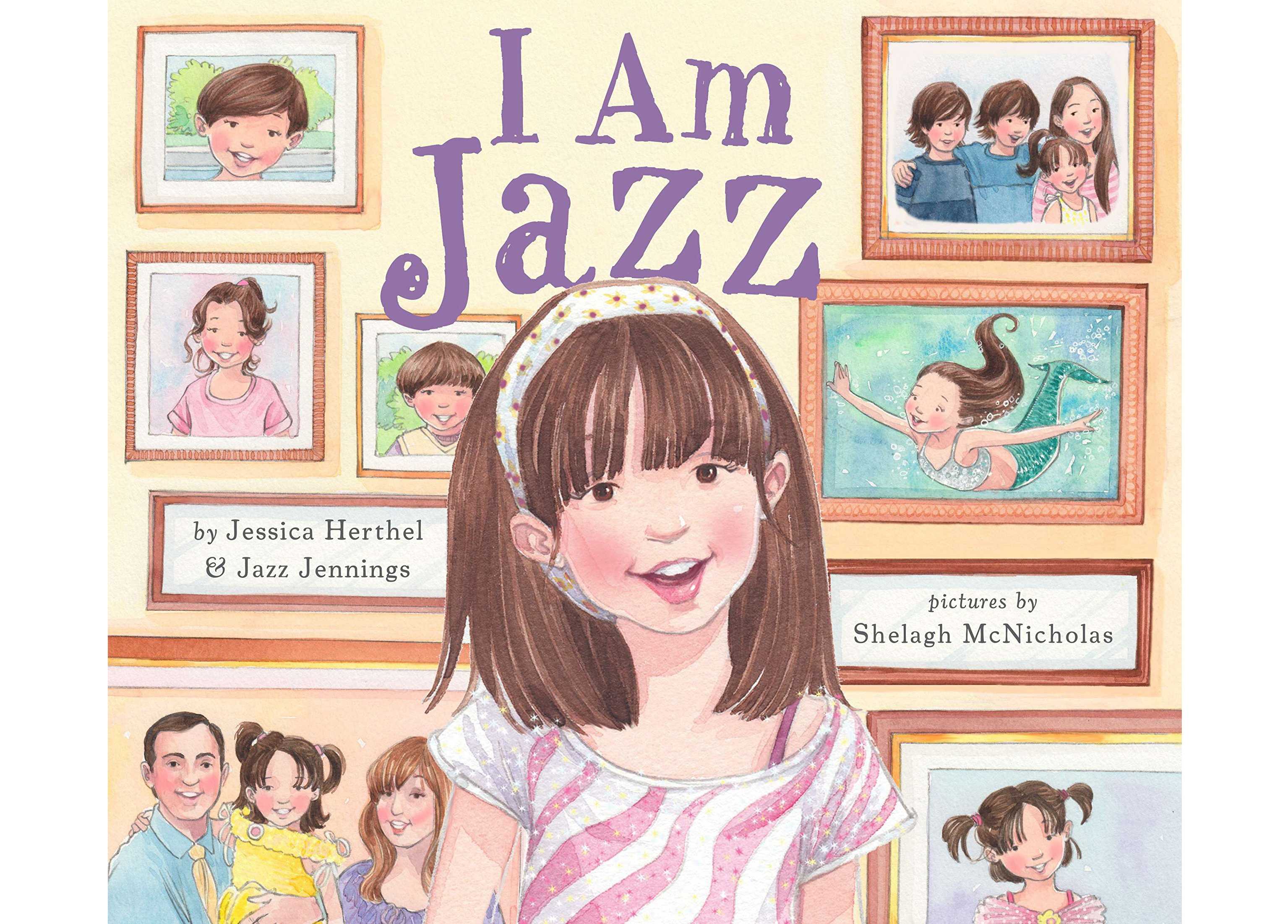
Jazz Jennings, a very simple name that is causing a lot of talk. Jazz is a YouTuber and author of the chapter book “Being Jazz,” the kids book “I Am Jazz,” and stars in a TLC reality series about her life, beginning in 2015. All three genres follow the life of Jazz and her journey as a transgender person. The books and TV series, “I Am Jazz,” help to expand the understanding of what it means to be transgender, while also explaining the criticism and support Jazz has received for just being herself.
“I Am Jazz,” the children’s book, starts off with Jazz talking about her favorite things, her family and her best friends. Midway through “I Am Jazz,” the main character begins to speak on how she is different from her two friends Samantha and Casey. Jazz begins to say, “I have a girl brain but a boy body,” explaining that she has never really liked to play with boy toys or with her brothers. Instead she likes playing princess, dressing up and talking to her sister about her dreams.
In the chapter book, “Being Jazz,” Jazz explains further, “Imagine a young boy who’s super into trucks and cars and playing in the mud. Then imagine that every time his parents take him out in public, they’d paraded him around in a pink frilly dress with a parasol. The humiliation he’d feel is exactly the same humiliation I felt having to wear plain shorts and a tee shirt.”
“Being Jazz” goes deeper into Jazz’s parents and how they met. It also describes an old wives’ tale that can supposedly determine a children’s gender. Jazz’s mother, Jeanette believes the tale, in which a necklace is swung over the expecting mother’s belly. If it swings back and forth, it will predict a boy, but if it swings in a circular motion, the baby will be a girl. In the case of Jazz, the necklace swings in a circular motion.
At the beginning of both books, no one really understands how Jazz feels. Everyone sees Jazz as Jared, which was her birth name before her sister nicknamed her Jazz. This is the case for many transgender people, people who identify as the opposite gender of the body they were born into. Jazz’s parents are not very aware of what was going on. It isn’t until Jazz and her parents go to a doctor that the term transgender is brought up.
At the age of four Jazz is then diagnosed with gender dysphoria, a state of conflict between a person’s gender and the sex the person was identified with at birth. Her parents finally understand her. When Jazz is enrolled in kindergarten, her parents began to let her change her appearance from letting her grow her hair out to wearing feminine clothing in public.
Jazz receives a lot of love and support from her family but a lot of criticism from a world that doesn’t fully understand her. In “Being Jazz,” she describes many of the difficulties she has had as a child in school. She isn’t allowed to use the girls’ bathroom, and has to use a unisex bathroom in class that has no lock, and people often walk in on her.
Later Jazz explains how she finds it hard to escape from the gossip of others, including teachers and fellow students. Being able to make friends also becomes an obstacle for Jazz, but she soon comes to realize that the people who do take the time to get to know her usually tend to like her. Another challenge is that Jazz must find a way to deal with her boyfriend’s mother because she is transphobic. Jazz continues her journey in getting gender confirmation surgery.
The “I Am Jazz” children’s book has grown in popularity recently after two Democrat Congresswomen read the book on the floor of the U.S. House of Representatives on February 26. A Kalamazoo Public Schools third grade teacher at Greenwood, Jamie Hatfield read the book to her class. After reading the book, Jamie held a class discussion on what it means to be a transgender.
When asked about her personal thoughts on “I Am Jazz” as a teacher, Jamie said, “I think the younger the better. Bias and hate is learned. If we teach love and acceptance at a young age, we can be proactive in making a better more accepting society. I feel that all students benefit from learning about people who are different from themselves. Literature is a wonderful way to open windows and doors into the lives of others.”
Maya Crawford, a sophomore at Loy Norrix, has also read the kids book, “I Am Jazz” and said that she loved the illustrations and how simple the book was. She also enjoyed how the book did not contain any political debate, that Jazz was just a girl in a boy’s body and that’s it.
“I think it’s very important for kids to know that transgender people are regular people. I think it’s definitely something that needs to be put out there so people can be educated. The fact that it was made into a kids book is great because they’re more willing to listen and be educated than older groups of people with decided opinions.It’s targeted at a younger audience, so it doesn’t get into the heavy details and debates about being transgender. It’s a great first step for the community!” said Crawford.
Junior, Miranda Cole has seen the “I Am Jazz” show and said she enjoys that show, “It does not sugar-coat what she goes through in her daily life. Jazz gives students a real life example and shows that this is a real world thing that we should be open to talking about.”
Miranda has also found a way to relate to the show, saying, “I relate because as a teenager, it was really hard to be who I am and have it be socially acceptable.”
With the “I Am Jazz” show finale coming in 2019, Jazz will be 18. She continues going to schools attempting to educate others on transgenderism. Both books and the TV series let you into the mind of someone and can help those who may not be comfortable with the topic to have a better understanding from someone else’s point of view.
Categories:
Looking Into the Life of Jazz: Understanding Transgenderism Through One Girl’s Experience
May 15, 2019
0







